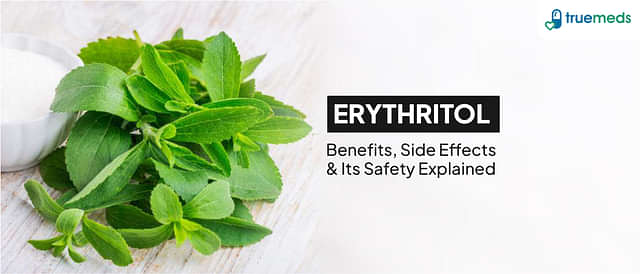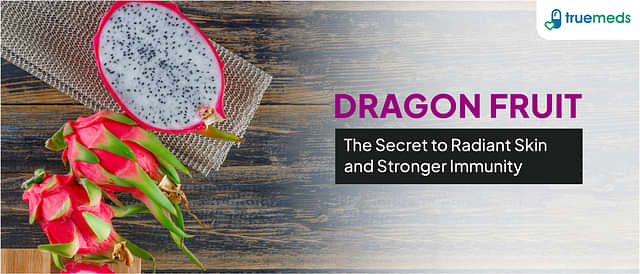How To Treat Melasma During Pregnancy
Last updated on : 05 Mar, 2024
Read time : 8 min
What is Melasma?
Melasma is a skin condition that results in dark spots on the face, particularly on the cheeks, forehead, nose, upper lip, and neck pigmentation during pregnancy. It is commonly called a “pregnancy mask” because it occurs in many women during pregnancy, although it can also affect men and non-pregnant women.
Melasma is not a dangerous condition, but it can be distressing for those affected by it. In some cases, melasma may fade after pregnancy, but in others, it may persist. Fortunately, several treatment options are available, including topical lightening agents, chemical peels, and laser therapy.
Causes of Melasma during Pregnancy
The exact cause of skin pigmentation during pregnancy is not entirely known. Still, it is thought to be related to several factors, which include hormonal changes, genetics, and sun exposure.
1. Hormonal Changes
Pregnancy is associated with a significant hormone increase, particularly estrogen and progesterone. These hormones stimulate the production of melanin, the pigment that gives colour to the skin, leading to the development of melasma.
2. Sun Exposure
Sun exposure can worsen melasma by stimulating melanin production. Ultraviolet (UV) light can penetrate the skin and increase melanin production, resulting in dark patches or pigmentation during pregnancy on the skin.
Other risk factors that can increase the chances of developing melasma during pregnancy include a history of hormonal imbalances, certain medications, and a personal or family history of the condition.
Speaking to a doctor for a proper diagnosis and discussing the best treatment for your situation is essential.
3. Genetics
Melasma has a vital genetic component; some people may be more susceptible to developing the condition due to their genetic makeup.
Symptoms of Melasma
The primary symptom of melasma is dark, irregularly-shaped patches on the face. These patches are typically symmetrical and may appear on the cheeks, forehead, nose, and upper lip. The colour of the patches can range from light brown to dark brown and may be lighter or darker than the surrounding skin.
The patches may sometimes have a slightly raised or rough texture, and the skin may feel itchy or have a mild burning sensation. However, these symptoms are not typical, and melasma is usually painless.
It is essential to know that not all dark patches on the face are melasma. Other conditions, such as age spots, freckles, or sunburn, can also cause dark patches on the skin.
Diagnosing Melasma during Pregnancy
1. Examining the Skin
The diagnosis of melasma during pregnancy usually begins with a physical examination of the skin. A doctor may examine pigmentation during pregnancy or the dark patches and ask about any symptoms or triggers, such as sun exposure or hormonal changes.
The doctor may also ask about family history and current medications, which can provide additional information that may help with the diagnosis.
In addition to a physical examination, the doctor may use a unique tool called a Wood lamp to examine the skin. The Wood’s lamp emits ultraviolet light, which can help the doctor determine the depth and extent of the pigmentation.
2. Performing a Skin Biopsy
Sometimes, a skin biopsy may be required to determine other conditions that can cause similar symptoms. During a skin biopsy, a small skin sample is taken and examined under a microscope to determine the cause of the dark patches.
Treatments for Melasma during Pregnancy
Some best products for Melasma are as follows:
1. Sunscreen
Wearing a wide-brimmed hat and using a broad-spectrum sunscreen with a high SPF concentration can help prevent the worsening of melasma and protect the skin from UV damage. Majorly it helps to avoid face pigmentation during pregnancy.
2. Topical Lightening agents
Hydroquinone is a commonly used topical lightening agent, but it is not recommended during pregnancy. Your doctor may prescribe a topical cream that contains azelaic acid, kojic acid, or glycolic acid. These ingredients can help to lighten the dark patches of melasma. It may be safe during pregnancy and can help to treat melasma.
3. Chemical peels
Chemical peels, which include glycolic acid or salicylic acid peels, can help lighten the dark patches caused by melasma. However, discussing chemical peels with a doctor is essential, as some peels may not be safe during pregnancy.
4. Laser therapy
Your doctor will use a laser to target the dark patches of melasma, which will break up the pigment. It will cause the dark patches to fade over time. Laser therapy is not typically recommended during pregnancy because it is unclear how it might affect a developing foetus.
How to avoid Melasma during pregnancy?
It might not be possible to prevent melasma completely, but several steps can help minimise the risk of developing melasma or pigmentation during pregnancy. They are
1. Avoid sun exposure
Avoid sun exposure, especially during peak hours like(10 a.m. to 4 p.m.), when the sun is strongest.
2. Wear protective clothing
When spending time outside, dress protectively in long-sleeved shirts and pants.
3. Avoid hormonal changes
Hormonal changes, which occur during pregnancy, can trigger melasma. If possible, talk to a doctor about ways to manage hormonal changes, such as taking hormonal contraceptives. This may help to avoid pigmentation during pregnancy.
4. Avoid irritants
Avoid skin irritants like hot water and harsh soaps that can cause or exacerbate melasma.
5. Maintain a healthy diet.
A healthy diet rich in minerals and vitamins, such as vitamins C and E, can help maintain healthy skin and reduce the risk of developing melasma.
It is important to remember that melasma is complex, and there is no definitive way to prevent it. However, by following these tips, it may be possible to reduce the risk of developing melasma or prevent it from worsening.
Home remedies for Melasma
Home remedies for pigmentation during pregnancy are as follows:
Aloe Vera is a natural ingredient used for centuries to treat skin conditions. It’s rich in antioxidants and anti-inflammatory properties that can reduce inflammation and hyperpigmentation. To use aloe vera for melasma, apply the gel from the plant directly onto the affected areas and leave it on for 15-20 minutes. Rinse with lukewarm water and repeat daily.
Apple cider vinegar is another natural ingredient that can help reduce the appearance of melasma. Its acidic properties can help exfoliate the skin, which can help remove dead skin cells and reduce hyperpigmentation. To use apple cider vinegar, mix equal parts of water and apple cider vinegar and apply the mixture onto the affected areas with a cotton ball. Leave it for 5-10 minutes, then rinse with lukewarm water. Repeat once a week for best results.
Lemon juice is a natural bleaching agent that can reduce hyperpigmentation and remove dead skin cells. To use lemon juice for melasma, mix equal parts of lemon juice and water and apply the mixture onto the affected areas with a cotton ball. Repeat once a week for best results.
Turmeric is a spice used for centuries in Ayurvedic medicine to treat various health conditions. It’s rich in antioxidants and has anti-inflammatory properties that can help reduce inflammation and hyperpigmentation. To use turmeric for melasma, mix one tablespoon of turmeric powder with enough milk or water to form a paste. Apply the paste onto the affected areas and leave it on for 15-20 minutes. Rinse with lukewarm water and repeat once a week for best results.
Onion juice is another natural remedy that can help reduce hyperpigmentation. It contains sulfur compounds that can help reduce inflammation and lighten melasma patches.
Conclusion
Melasma during pregnancy is a common skin condition that affects many women. While it can be frustrating and even embarrassing, there are steps that you can take to manage and treat hyperpigmentation during pregnancy. By following the tips and home remedies we’ve discussed in this article, helps reduce the appearance of melasma and can feel more confident. You can obtain branded and generic medications by uploading your prescription to the Truemeds app. You may save money when ordering drugs online by selecting an alternative or generic medicine advised by Truemed‘s expert doctors. You can save up to 72% on your purchase and get free home delivery across India.
Frequently Asked Questions
Although melasma can start at any point during pregnancy, it usually occurs in the second or third trimester. Once more, there are many variables at play when pigment darkens. Depending on your skin type and colour, this condition may be more or less noticeable. It may also depend on how much time you spend outside under the sun.
The good news is that melasma after pregnancy will probably not get worse after you give birth to your child. However, without any specific treatment, it might take some time to go away — possibly months.
References
Ogbechie-Godec, O. A., & Elbuluk, N. (2017, July 19). Melasma: an Up-to-Date Comprehensive Review. PubMed Central (PMC). https://doi.org/10.1007/s13555-017-0194-1
Disclaimer
Our healthcare experts have carefully reviewed and compiled the information presented here to ensure accuracy and trustworthiness. It is important to note that this information serves as a general overview of the topic and is for informational purposes only. It is not intended to diagnose, prevent, or cure any health problem. This page does not establish a doctor-patient relationship, nor does it replace the advice or consultation of a registered medical practitioner. We recommend seeking guidance from your registered medical practitioner for any questions or concerns regarding your medical condition.
Popular Articles
Recommended Articles
Recent Articles
Top-Selling Medicines:
...View more
Top-Selling OTC:
...View more
Company
About UsHealth ArticleHealth StoriesDiseases & Health ConditionsAll MedicinesAll BrandsNeed HelpFAQSubscribe
Registered Office Address
Grievance Officer
Download Truemeds

Contact Us
Our customer representative team is available 7 days a week from 9 am - 9 pm.
v3.7.10
Our Payment Partners



























































